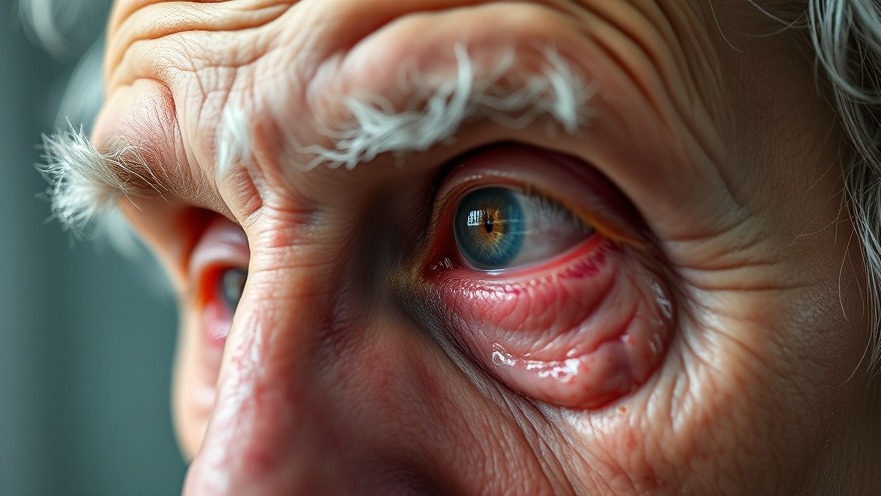
New Approaches to Glaucoma Management: Drastic Reductions in Treatment Complexity and Risk
In an exciting advancement in glaucoma treatment, researchers at the University of Toronto have unveiled a new drug delivery method that promises to revolutionize how this prevalent eye disease is managed. Traditional methods primarily rely on daily eye drops, which are commonly associated with poor patient compliance due to the challenges of self-administering them consistently and correctly. However, this newly developed technique could replace these drops with a simple, single injection under the eyelid, providing long-lasting relief for up to seven weeks.
The Science Behind Extended Relief
At the heart of this innovative approach is the use of colloidal drug aggregates (CDAs), which modify the delivery and efficacy of timolol, a widely utilized glaucoma medication. By dispersing timolol prodrug colloids in a hydrogel formulation, researchers are able to maintain effective drug release for a significantly longer duration compared to traditional eye drops, which only provide relief for about six hours.
Dr. Molly Shoichet, the lead researcher, emphasizes how this advancement addresses common patient struggles. "Self-administering drops can be difficult, especially for older adults who are more frequently affected by glaucoma. Our work showcases a non-invasive alternative that could lead to better patient outcomes by removing the burden of daily dosing," she explains.
A Growing Problem: Glaucoma and Patient Compliance
Glaucoma, the leading cause of blindness globally, affects approximately 80 million people. The disease is characterized by increased intraocular pressure that can lead to irreversible optic nerve damage. Conventional treatments often involve a regiment of eye drops that many patients fail to adhere to consistently–a situation that can heighten the risk of vision loss. According to Blake Williamson, MD, sustainable treatment regimens are critical, especially for older patients with multiple health conditions that complicate medication regimens.
Williamson points out the logistical issues patients face with eye drops. “In my practice, I see patients mix up their medications or even accidentally use the wrong drops,” he explains. Sustained delivery systems, like the one emerging from Toronto, provide a solution that could simplify treatment protocols and enhance patient management.
Innovation on the Horizon: Current Treatments and Future Prospects
Current sustained-release options, such as the recently approved Durysta and iDose TR implants, already demonstrate the ongoing shift towards less invasive, longer-lasting treatments. They aim to reduce the reliance on patient compliance and often require fewer visits to healthcare providers for drug administration. The new delivery method aligns with this trend, providing exciting prospects for patients who may struggle with traditional medication approaches.
PolyActiva, another key player in this space, is making strides with its PA5108 implant that offers sustained drug delivery for 26 weeks. This advancement addresses similar issues, providing patients with a consistent dose while mitigating risks associated with traditional delivery methods. The biodegradable device seamlessly dissolves post-treatment, leaving no residual material, a feature that minimizes post-implant complications.
Understanding the Mechanisms: How These Implants Work
Both new technologies leverage the principles of controlled drug release through innovative physical delivery mechanisms. For instance, the PA5108 implant uses zero-order kinetics, allowing it to maintain steadier drug levels over time. Such strategic advancement not only enhances therapeutic effects but also substantially reduces side effects associated with ocular treatments needed in glaucoma care.
The shift towards these advanced drug delivery methods reflects a broader understanding of the patient experience and the unique challenges faced by those living with chronic conditions like glaucoma.
Final Thoughts: The Path Forward for Glaucoma Treatments
The transition from traditional eye drops to innovative drug delivery systems represents a significant step forward in managing glaucoma. By prioritizing patient adherence and simplifying treatment regimens, these technological advancements have the potential to drastically improve outcomes for millions of patients worldwide. Collaborative efforts among researchers and healthcare providers are essential in targeting the nuances of glaucoma management, and the ongoing research by institutions like the University of Toronto is invaluable in this journey.
As these innovative treatment systems become readily available, it’s crucial for healthcare providers to stay informed about new developments in the field, ensuring their patients can benefit from the most effective treatments designed to preserve their vision.
 Add Row
Add Row  Add
Add 






Write A Comment